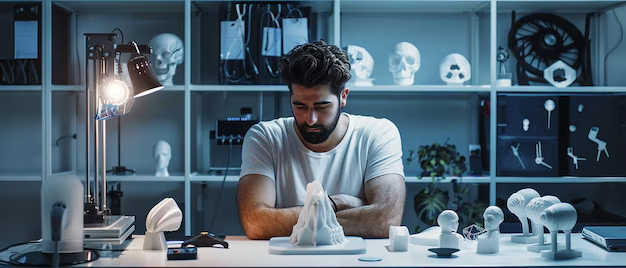This blog post explores how innovative molding techniques are reshaping product design and manufacturing. In an age where innovation drives competitive advantage, designers and engineers are embracing these methods to enhance creativity and establish new production standards.
Understanding the Role of Molding in Product Design
Molding has long been a crucial part of product design, providing the means to bring ideas to life with precision and consistency. The significance of molding cannot be overstated; it shapes everything from the smallest components to large-scale products. However, with the market demanding more intricate and customizable designs, traditional methods are being challenged to adapt and evolve.
Product designers and engineers have realized that the right molding technique can be the difference between a good product and a groundbreaking one. This shift has led to a surge in innovative approaches that not only meet but exceed modern design expectations. By exploring and adopting these new techniques, companies can push the boundaries of what’s possible, delivering products that are as functional as they are aesthetically pleasing.
Traditional Molding Methods and Their Modern Limitations
Traditional molding techniques such as injection molding and blow molding have been industry staples for decades. These methods excel in producing high-volume, consistent parts, making them ideal for mass production. However, as the demand for customization and complexity increases, their limitations become more apparent.
One significant drawback is the inflexibility of design changes once a mold is created. Adjustments can be costly and time-consuming, hindering the adaptability needed in today’s fast-paced market. Additionally, traditional methods may struggle with producing intricate designs or using advanced materials, which are becoming more common in innovative product design.
The evolving needs of consumers and industries alike highlight the necessity for molding techniques that offer greater versatility and efficiency. This has paved the way for new technologies that address these limitations, providing designers and manufacturers with exciting new tools.
Advancements in Molding Technology
The landscape of molding technology is rapidly changing, with several advancements leading the charge in innovation. One such breakthrough is 3D printing, which offers unprecedented design freedom and rapid prototyping capabilities. Unlike traditional methods, 3D printing allows for on-the-fly modifications, enabling designers to experiment and refine ideas without the constraints of conventional molds.
Micro-molding is another cutting-edge technique gaining traction, particularly in industries requiring small, high-precision components, such as medical devices and electronics. This method allows for the creation of tiny parts with remarkable detail and accuracy, opening up new possibilities in miniaturized product development.
Overmolding, which involves molding a layer of material over an existing part, enhances functionality and aesthetics. It’s particularly useful in creating ergonomic products with improved grip or added features. These advancements demonstrate how innovative molding techniques are expanding the horizons of product design, allowing for more complex, functional, and visually appealing products.
Integrating New Molding Techniques into Design Processes
For product designers and engineers, integrating new molding techniques, such as a plastic injection molding service, requires careful consideration and planning. Selecting the right technique depends on several factors, including the desired material, design complexity, production volume, and budget. Collaboration between designers, engineers, and manufacturers is crucial to ensure that the chosen method aligns with the project’s objectives.
Understanding the capabilities and limitations of each technique is essential for making informed decisions. For instance, while 3D printing excels in prototyping, it may not be suitable for high-volume production. Conversely, micro-molding is ideal for precision parts but may not accommodate larger designs.
Investing in training and staying updated on technological advancements can help teams maximize the potential of innovative molding techniques. By doing so, they can streamline their processes, reduce lead times, and bring groundbreaking products to market more efficiently.
Future Trends in Molding Technology
The future of molding technology is poised for even greater advancements, driven by ongoing research and development. Emerging trends include the incorporation of smart materials, which can change properties in response to environmental stimuli, offering dynamic functionalities in products.
Automation and AI are also set to play a significant role, enabling more efficient, precise, and adaptable production processes. These technologies promise to further enhance the capabilities of molding techniques, pushing the boundaries of what can be achieved in product design.
Sustainability is another critical focus, with advancements aimed at reducing material waste and energy consumption. Eco-friendly materials and processes are becoming increasingly important as companies strive to minimize their environmental footprint.
Conclusion
In conclusion, innovative molding techniques are reshaping the landscape of product design, offering unprecedented opportunities for creativity, efficiency, and sustainability. By staying informed and open to new methods, product designers, engineers, and manufacturing companies can unlock the full potential of these technologies.



